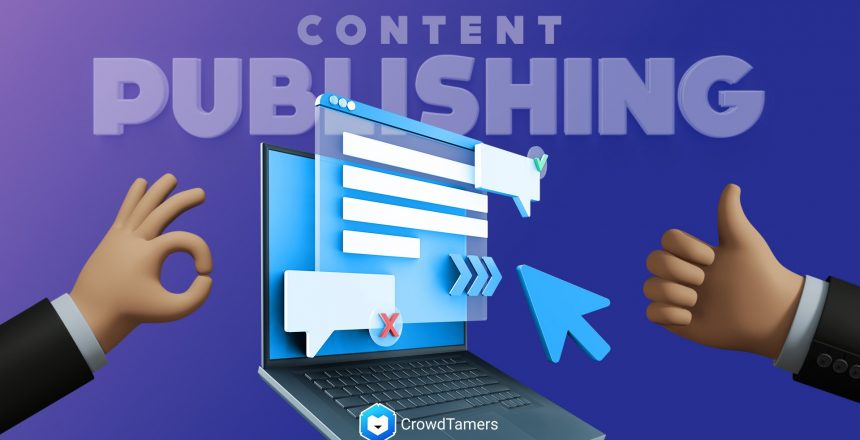I’ve been doing content marketing with a focus on using it to drive revenue for over a decade now, and one of the most crucial lessons I’ve learned is that while it is very hard to make good content, it is much harder to distribute the content well after you make it.
What I mean here is: when you’re new at this, all of the content you create is lost into the great screaming void. There’s very little you can do with your content if it’s not earning you visits, so what do you do?
Ads. They’re not cheap, but they can be very effective.
I don’t like social media ads as a way to drive traffic for direct revenue generation. It’s very hard to make money at that. Most businesses fail at it. But social media ads are perfect for growing an audience before you have organic reach.
So the hack here is simple at its root: use social media ads to drive visits to your content; use tools like ConvertKit or HubSpot to convert visitors into leads and leads into sales.
Let’s start with a diagram of the whole process from start to finish:
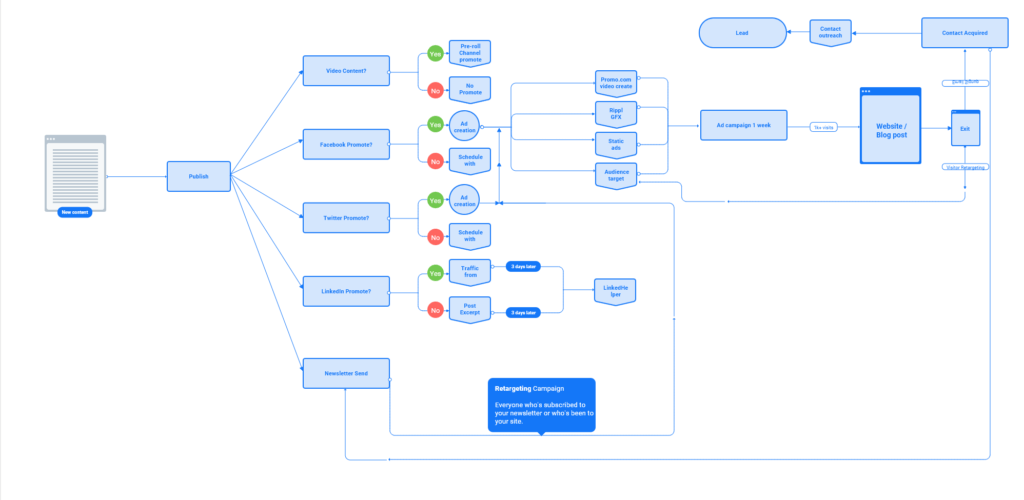
This starts with a piece of anchor content or otherwise high quality content. This is not the kind of publication campaign you create for a listicle that you churned out to make sure that you’re hitting your wordcount goals for the week. The ROI on aggressively distributing anything less than your best content doesn’t bear this model out.
There are 3 major pieces to this distribution model:
- Building your channel strategy
- Creating your ads
- Acquiring & converting leads
Building your channel strategy
Different kinds of content are better suited for different kinds of channels. When you think about where you are going to distribute your content, you need to know, first, what channels are good native places for that content to live. Where you want to be varies based on questions like “Who is my persona?” and “What do I really sell anyway?”.
The key idea is that you want to find a content type & channel that suits the kind of audience that you are trying to attract and then pay as much as you can comfortably afford to get that audience to your content when it counts.
At the abstract level, it might look like this:
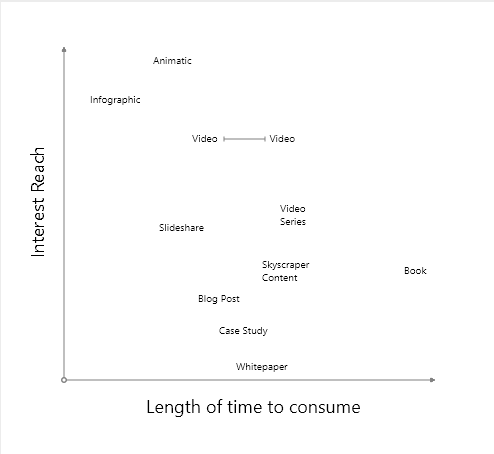
In the Attention Economy that social media is, it’s important to think about who your customer is and what they want from their content as you create content and especially as you publish and promote it. B2C content is often about amusing or entertaining people to help pass time. B2B content needs to be increasingly information dense and high-value as you chase up the seniority chart with your buyer persona.
These types of content loosely group like this:
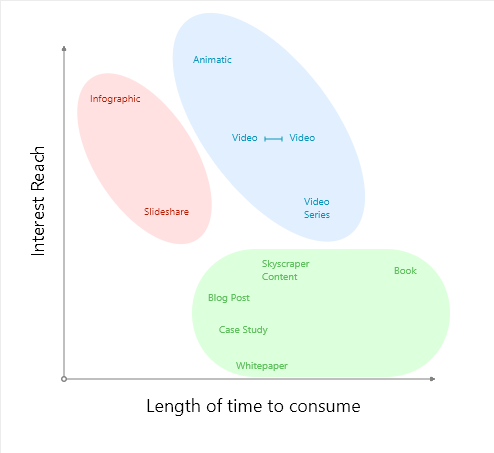
So let’s imagine that you are selling B2C luxury air fresheners. Automatically, a bunch of the channels that you might undertake from the above chart are ruled out; you’re not going to make slideshares or case studies. Blog posts aren’t going to be a substantial way to grow your user base. You need to stick to broad reach, easily-digested content. Videos and graphics are where you’re at.
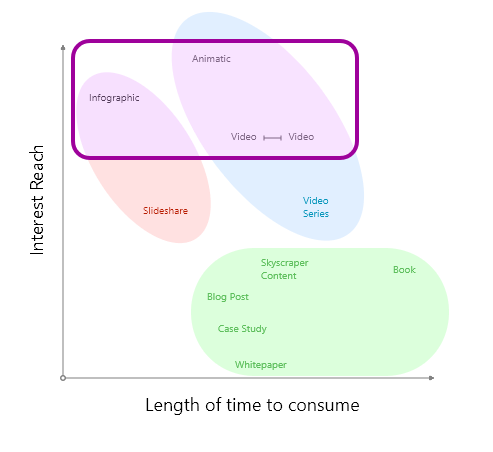
Variously, if you’re selling B2E web server integration software, you’re going to want to focus your attention on getting case studies and skyscraper content into the hands of the CIO or CTO who cares about the problems that you solve. Think of it like this:
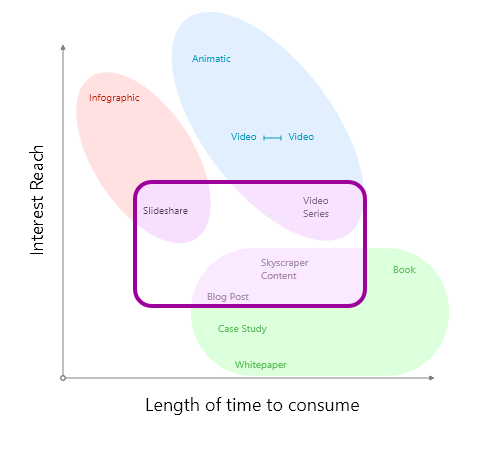
Knowing your channel strategy is important. It’s how you reach your audience, and it’s how you build your content.
Creating Your Ads
Once you are confident about your channel strategy, you should be ready to start building ads around your content. The channel strategy for acquisition should serve you as a guide for where you’re advertising, but it’s always worth trying to pull audience from another channel into yours.
That is to say, if you’re creating white papers, there’s no harm in making short videos that talk about the white paper and see if they’re effective in bringing you good leads from Twitter or YouTube.
First up, you’ll want to make sure that you are publishing your content as different media types as I discussed last month. In short: as video and images have way higher consumption and sharing rates than text posts do, make sure that you’re creating high-engagement content for your ads from the beginning to keep down costs per click.
Now let’s investigate the middle of that flowchart:
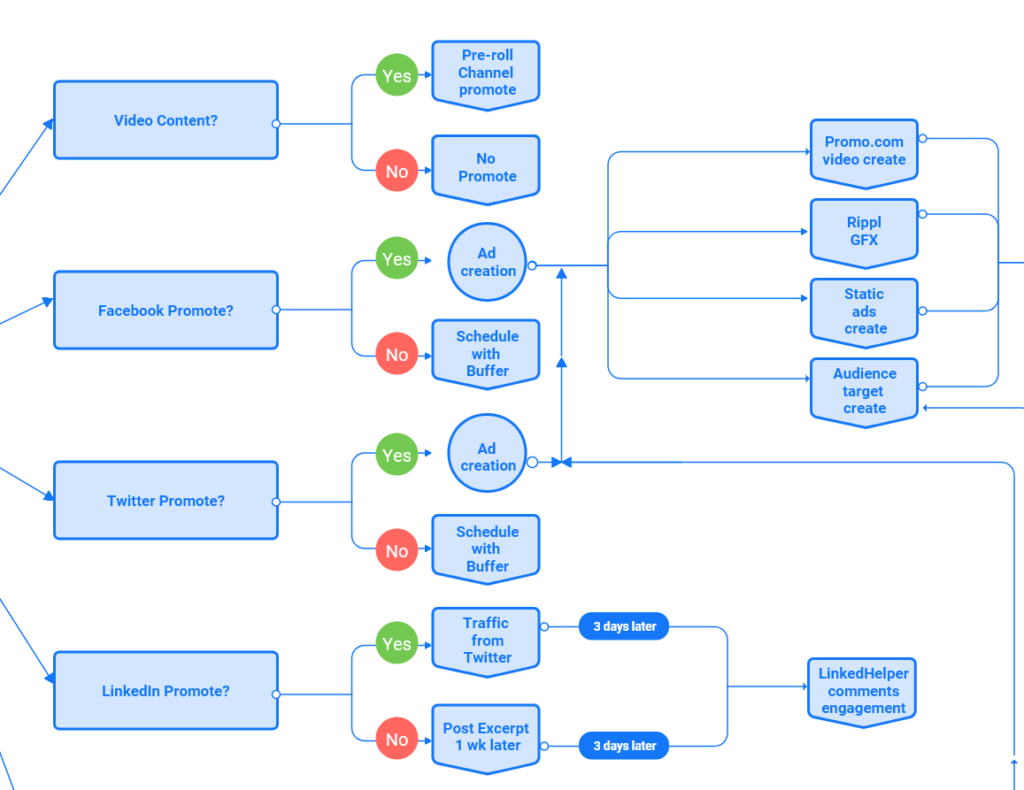
Each channel you want to post on has a simple decision: are you going to publish (& pay) ad content on that channel or not? If no, following a simple reposting schedule can handle the content share for you. If you do want to advertise it, there’s the steps on the right side there: create animated ads, identify and segment out your audience for targeting, and then buy ads and run them.
The way I run social media publishing experiments is bog simple: use the headline / image combo that you’ve developed for your content (+ a variant headline and image, if you can) driving people to read / watch / listen / whatever at your primary point of consumption.
For this blog, for example. I’d drive people idling on YouTube or LinkedIn to come check out https://crowdtamers.com/blog or even better yet come check out this post specifically. The ad campaign runs for 1 week, and then at the end of it you can take stock of the campaign and how well or poorly it went, and then you can iterate from there to make next weeks’ work better.
Acquiring and converting leads
1,000 visits in a week is about the minimum of traffic you want to send to the destination of any ads you create. But once you’ve sent that traffic to your content, how do you engage the visitor to give you information so you can contact them again?
For one thing, you can ask them to sign up. The simplest version is what I have on my website right now: a list signup at the bottom of the page. You can get increasingly more elaborate from there, following steps to grow your email lists to 70,000 and beyond, but in the end that’s a single tactic to get signups.
Another one–which I am fond of–is setting up Facebook’s Tracking Pixel and then pushing your content to people who visited your site but never finished the signup process. They’re interested enough to check you out but not interested enough to become a lead yet.
Retargeting those people with other content you’ve made that’s great is a very high-value way to keep trying to acquire that lead by bringing them back to your site again.
Once they’ve signed up, a variation of that tactic–advertising your content to everyone who’s subscribed to your newsletter–helps keep you top of mind with potential customers. If they haven’t bought from you within 14 days of signing up, odds of getting revenue out of that lead get worse, so re-engaging via social media ads are one of the best ways to try and keep some life in that potential customer.
Any questions? Think that this process is too heavy? Let me know in the comments below. 🙂
